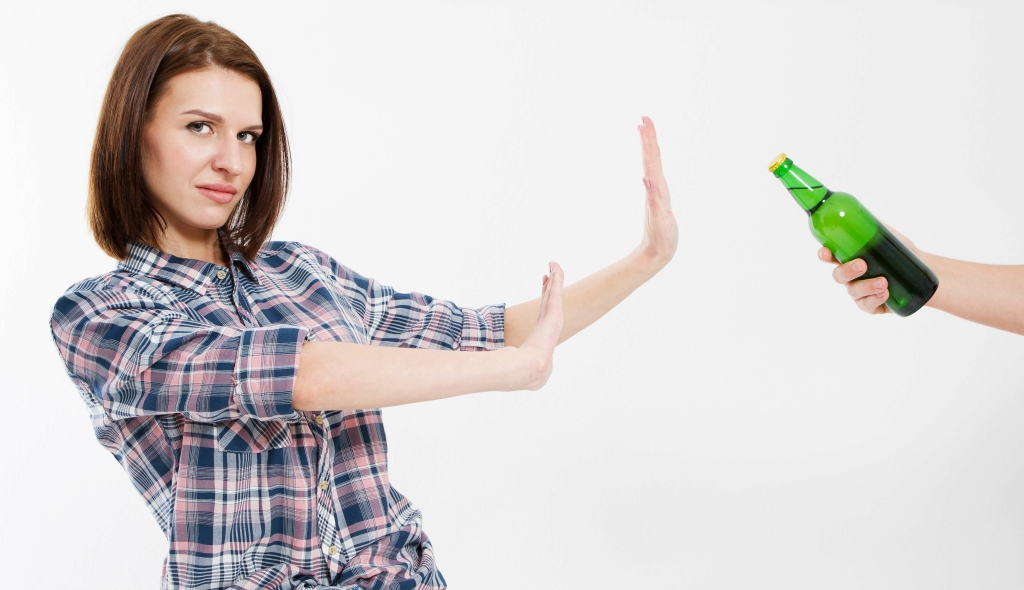Some people feel that “near beer” provides a valuable alternative to people looking to moderate their alcohol intake, but who are not quite ready to commit to total abstinence. On the other end of the spectrum, some say that there are many dangers in using non-alcoholic beer when quitting alcohol. NA beers only provide an additional excuse and loophole to drink for those not serious about their sobriety and do not have a place in a recovery-focused lifestyle. Some even say that the sensation of cracking open a can, or the pungent aroma of a fresh beer, is enough of a trigger for some recovering alcoholics that it can cause a devastating relapse. According to Federal law, for beer – or any other alcoholic beverage – to be considered non-alcoholic, it must contain 0.5% or less of alcohol by volume (ABV). This results in a product with 1/10th of the alcohol in regular beer – meaning, you would have to drink 10 NA beers to reach the blood alcohol level achieved by drinking one regular beer.

How can I support a friend in recovery who is considering drinking non-alcoholic beer?
Non-alcoholic beer can present as a good alternative to alcoholic drinks. Some popular non-alcoholic adult beverages include mocktails, which are essentially alcohol-free versions of traditional cocktails. These can be made by combining various juices, sodas, and flavored syrups to create a refreshing and flavorful drink. During rehab, you’ll meet in groups and one-on-one with licensed therapists, counselors, and addiction treatment experts to work through addiction-related issues. Therefore, if you go back to drinking near beer to de-stress after work or have fun with your pals, you haven’t really changed your behavior at all. Non-alcoholic beer offers a unique option for those in recovery.
What support options are available after detox to avoid relapse?
People seek alternatives to traditional beer for various reasons. You might also be looking for a way to enjoy the flavors of beer while remaining sober. If you’re uncomfortable Substance abuse with drinking non-alcoholic beer, consider bringing your favorite non-alcoholic beverage, such as sparkling water or mocktails. Communicate your preferences to friends and family to create a supportive environment.
What to Know When You Start Dating Sober
However, for others, it could lead to isolation and increased cravings. Understanding the potential pitfalls and benefits of non-alcoholic beer is crucial for making informed decisions that support long-term recovery. This exploration dives into the factors influencing whether consuming these beverages jeopardizes sobriety.
BOLDSTEPS BEHAVIORAL HEALTH
Knowing all of the things that could go wrong will help you make an informed decision on whether alcohol-free beer is right for you. Non-alcoholic beers are a form of beer that has had alcohol removed or was brewed to contain a small amount of alcohol. Recovery aside, non-alcoholic beers are far more organic and wholesome than full–alcohol lagers. They’re generally made from only four natural ingredients – water, yeast, malt, and hops – with barely any preservatives or added sugars. Additionally, many people turn to alcohol to “take the edge off” after a long day, to help them relax and unwind in stressful situations, and even to aid insomnia.
Are there risks associated with non-alcoholic beer?

Bowdring, M. A., McCarthy, D. M., Fairbairn, C. E., & Prochaska, J. J. Non‐alcoholic beverage consumption among US adults who consume alcohol. Understanding these aspects helps you gauge the impact of alcohol on a person’s life. People in recovery who choose sobriety give themselves access to a world of opportunities where they can rekindle their passions, mend broken relationships, and advance personally. The best advice for those trying to remain sober would be to avoid anything that smells like alcohol. Both alcohol and the anticipation of alcohol may raise levels of a brain chemical called dopamine, which plays a role in feelings of elation drinking again after sobriety and pleasure, according to the investigators.
Because it’s important to know that non alcoholic beer does in fact still contain a small amount of alcohol and can prolong alcohol addiction. Regardless of the recovery program’s stance, the importance of a strong support system cannot be overstated. Whether it’s a sponsor, therapist, or support group, having people to discuss these decisions with is crucial for maintaining long-term sobriety. For some, the strict stance of programs like AA provides clear guidance and removes ambiguity.
To overcome this issue, you might think that switching to non-alcoholic (NA) beer is the answer. NA beer is created to taste just like regular beer without the https://smhotel.pe/2022/11/08/how-long-does-brain-fog-last-after-quitting/ alcohol content. It is important to note that alcohol-free beer is only required to have less than 0.5 alcohol by volume (ABV). Admitting her tendencies and weighing the pros and cons involved, Jenna decided the best choice for her is not to drink nonalcoholic beer. She decided it’s not worth putting her sobriety at risk, and this is the best route, at least for now, to support her long-term recovery.
- There are hundreds of thousands of like-minded people with the common bond of sobriety, so you can share your questions and concerns to get genuine opinions and experiences.
- Having a beverage that looks and tastes like beer may be a terrible idea for you right now in your recovery.
- These physical implications may derail your progress during recovery and even set back the healing process your body has undergone to repair the damage caused by alcohol abuse.
- The detox process is the first phase in recovery, helping the body and brain adjust without substances.
- Consuming non-alcoholic beer, which has a very low alcohol content (typically less than 0.5%), would technically not break sobriety.
- These settings may be where you interact most often with your community, so continuing to participate may help combat any isolation.
- The brewing process of non-alcoholic beer involves several methods designed to minimize alcohol content while preserving flavor.
- When recovering alcoholics consume non-alcoholic beer, it can become a kind of crutch, reinforcing old addictive behaviors.
- Some Loosid members have shared their experiences, saying that while drinking NA beer doesn’t mean they’ve broken sobriety, it made them want regular beer, which led to risky situations.
This website does not recommend or endorse any specific tests, physicians, products, procedures, opinions, or other information that may be mentioned on the Site. Reliance on any information provided by this website is solely at your own risk. We heap social pressures upon ourselves that don’t really exist, essentially creating excuses to drink. It’s far better to do away with this sort of thinking, but a non-alcoholic beer is a far less dangerous way of caving in than resorting to the real thing.
But to those of us who couldn’t stand the taste of alcohol, this excuse sounded like just that—an excuse. Even so, many alcoholics enjoyed their fair share of brews during their drinking days. Non-alcoholic beer (NA beer) has gained significant popularity in recent years.
